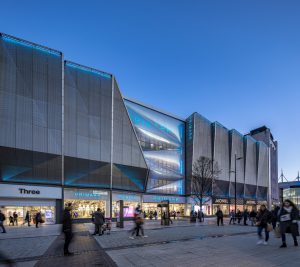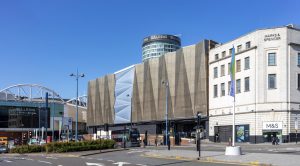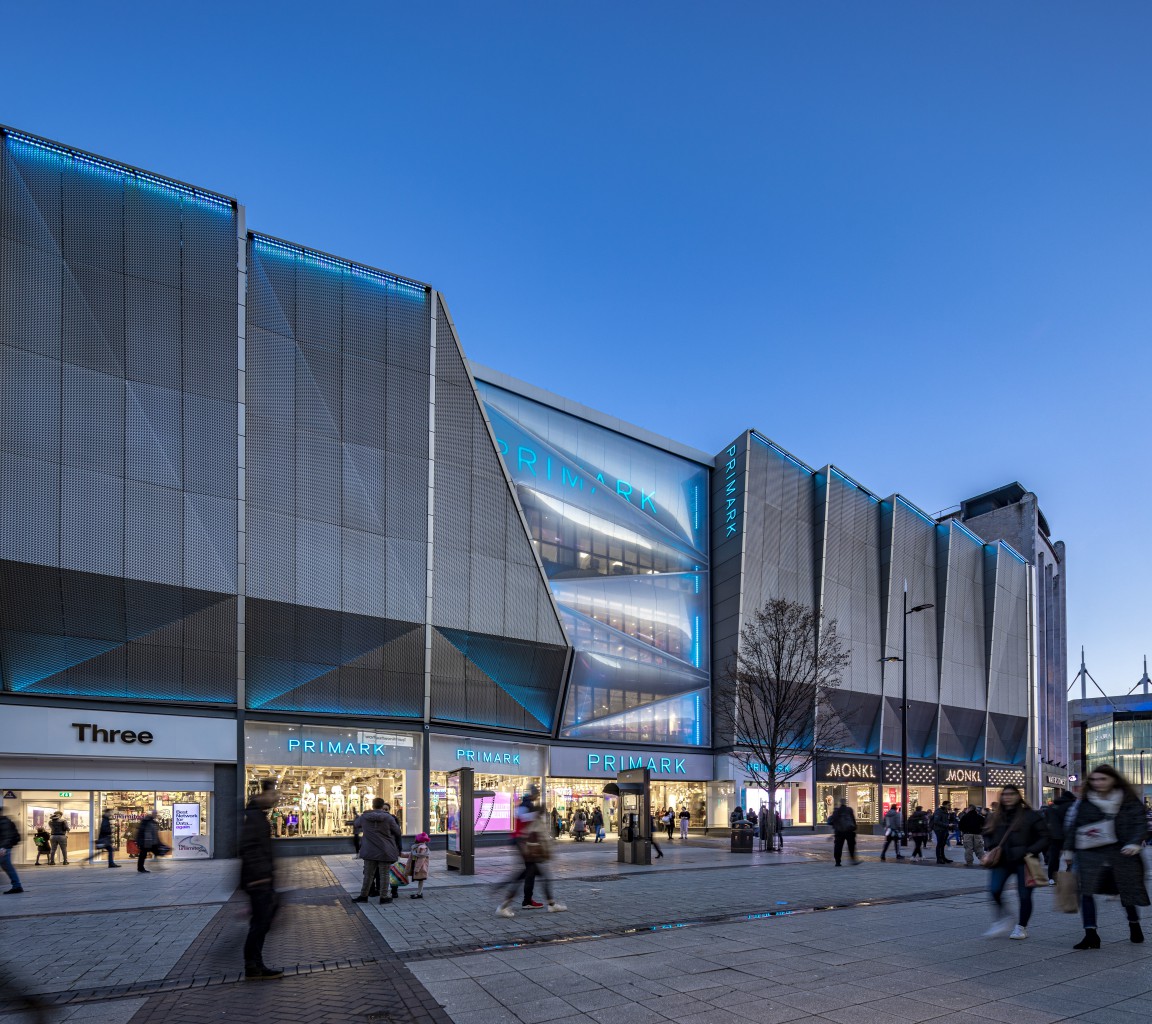Since its construction in 1988, the Pavilions has been a distinctive feature of Birmingham’s retail core. However, the Bullring and Mailbox developments have transformed the city’s retail landscape. The Pavilions struggled to compete combined with a shift away from traditional comparison shopping in areas such as High Street and Corporation Street. When Primark acquired the centre, over half the retail units were vacant. The City Council had suggested in their Curzon Street Masterplan (2014), that the Pavilions should be demolished to facilitate a new pedestrian street. It would connect the proposed HS2 terminus to Rotunda Square & the retail core.

During preliminary discussions with the planning authority an opportunity to re-shape the inward-facing centre to create a landmark development with a stronger relationship to the surrounding streets whilst delivering the desired pedestrian route in the tradition of the many Victorian retail arcades that criss-cross Birmingham was identified. Following an extremely challenging phased construction, the centre has been totally transformed. Primark’s largest flagship to date opened in April 2019.

Primark not only regenerated the existing streetscape but also brought a new life to the surrounding spaces. Primark became a real landmark in the Birmingham city maps recognisable by everyone.
Birmingham city centre is crisscrossed by a number of retail arcades that were delivered as part of its Victorian rail infrastructure and now offer a variety of retail outlets that form an integral part of the city’s retail offer. Each of the arcades provides active internal links between primary shopping avenues and transport interchanges. When developing the proposals for the Pavilions building this influence was used to generate the new links between High Street and Moor Street. The scale and character of the building aim to continue the scale and character of High Street and aims to act as a catalyst to enable the growth and development of the city’s retail core.

The Pavilions building sits within the context of highly recognisable and exemplary modern developments such as the grade II listed Rotunda, Library of Birmingham and the adjacent Bull Ring shopping centre. Working within this context the proposals sought to bring a new identity to the city block which the Pavilions dominate. The High Street façade was designed to consider oblique views, pedestrian movement and activates the ever-changing High Street frontage; the innovative double-skin mesh panels create a moire effect when moving along the street. Moor Street elevation responds to long range vistas which are dominated by primary transport corridors.

Key achievements
- Working Closely with the local planning authority, proposals were developed to support the ambitions set out by Birmingham City Council’s Big City Plan and anticipate new public realm initiatives that will be delivered along with the arrival of HS2 including:
- Legible Entrances with a coherent identity
- Promoting movement to, through and around the block
- Activating Frontage to both High Street and Moor Street
- Energising Streets and Animating Vistas
- Promoting the Renaissance of Birmingham City Centre
- Provide an active edge to the Station Square sympathetic to the Curzon Street / HS2 Masterplan.
2. Primark’s response to the Birmingham traditional criss-crossed retail arcades was to create a clear ‘arcade like’ connection through its own building. This creation refers to the Victorian rail infrastructure, now establishes a connection between the newest transport interchanges of 21st century Birmingham.
3. Primark has engaged in a ‘Global Local’ design initiative for its new stores where local influences from the city and local people are identified and integrated into the store’s design and imagery delivering the initiative of bringing Primark’s Global Brand to the locality.


